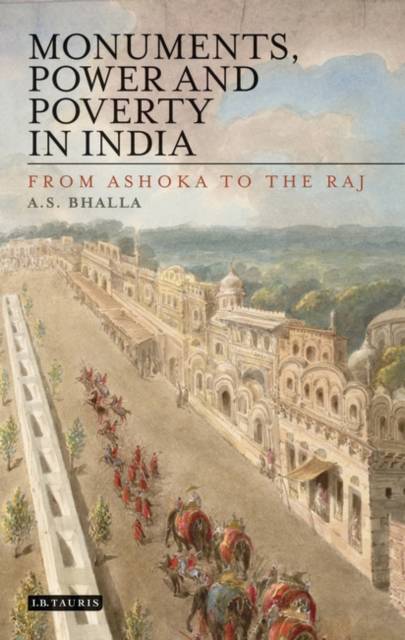
- Retrait gratuit dans votre magasin Club
- 7.000.000 titres dans notre catalogue
- Payer en toute sécurité
- Toujours un magasin près de chez vous
- Retrait gratuit dans votre magasin Club
- 7.000.0000 titres dans notre catalogue
- Payer en toute sécurité
- Toujours un magasin près de chez vous
76,45 €
+ 152 points
Format
Description
Much has been written about the Imperial architecture of the Indian subcontinent, but this is the first book to dig deeply into the extent of imperial extravagance set against the economic and social conditions of ordinary subjects. Bhalla uses an extensive collection of illustrations to complement this apparent paradox, assessing three Indian empires - Hindu, Muslim and British. From the 3rd century BC through to the end of British colonialism, splendid and often deliberately ostentatious buildings glorified the contemporary social structures. Moving through these different periods, important symbols of the various empires are assessed, including the fort palaces of Agra, Delhi and Lahore and the Taj Mahal.
The author here examines both the positives and negatives of empire, taking in social stability but also exploitation and oppression, exploring the subject of Indian poverty in a historical perspective alongside the more lasting symbols of empire. Through comparisons and contrasts, from the mausolea and palaces of the Mughals to the government buildings and memorials provided by the British, this is a comprehensive and well-researched overview of a country whose architectural history gives important insights into the diversity of its rulers. This unique look into colonial architecture and power dynamics will prove essential readers for students, researchers and all those with an interest in South Asian history or the history of architecture.
The author here examines both the positives and negatives of empire, taking in social stability but also exploitation and oppression, exploring the subject of Indian poverty in a historical perspective alongside the more lasting symbols of empire. Through comparisons and contrasts, from the mausolea and palaces of the Mughals to the government buildings and memorials provided by the British, this is a comprehensive and well-researched overview of a country whose architectural history gives important insights into the diversity of its rulers. This unique look into colonial architecture and power dynamics will prove essential readers for students, researchers and all those with an interest in South Asian history or the history of architecture.
Spécifications
Parties prenantes
- Auteur(s) :
- Editeur:
Contenu
- Nombre de pages :
- 264
- Langue:
- Anglais
Caractéristiques
- EAN:
- 9781350154698
- Date de parution :
- 19-03-20
- Format:
- Livre broché
- Format numérique:
- Trade paperback (VS)
- Dimensions :
- 140 mm x 216 mm
- Poids :
- 317 g

Les avis
Nous publions uniquement les avis qui respectent les conditions requises. Consultez nos conditions pour les avis.






